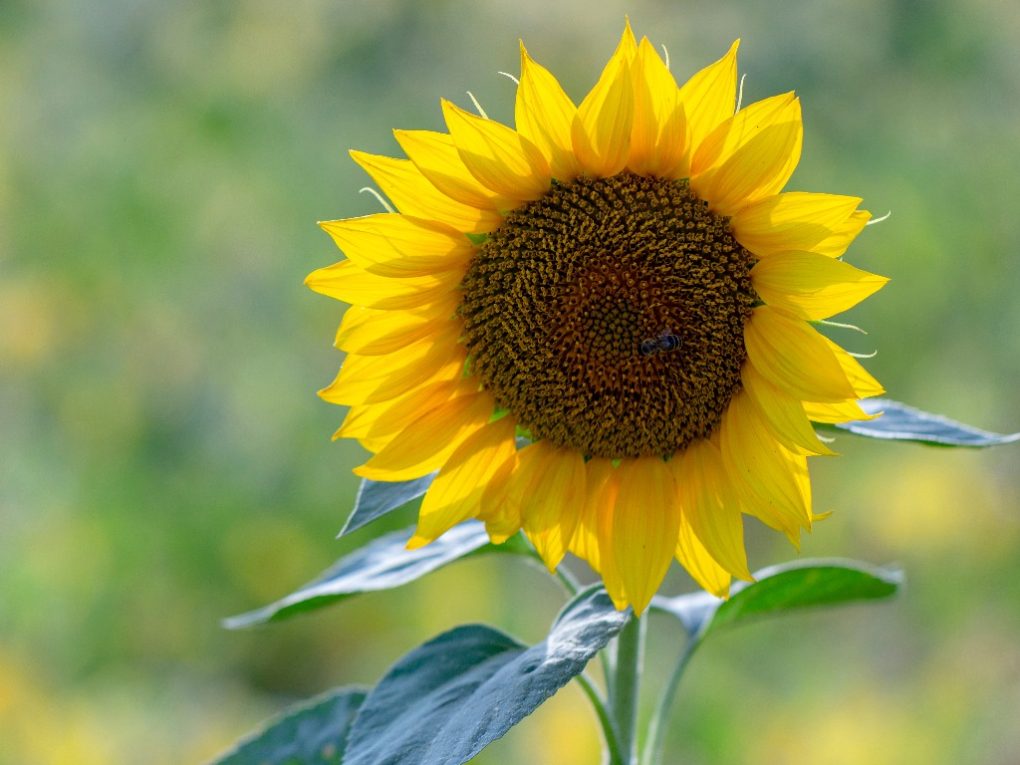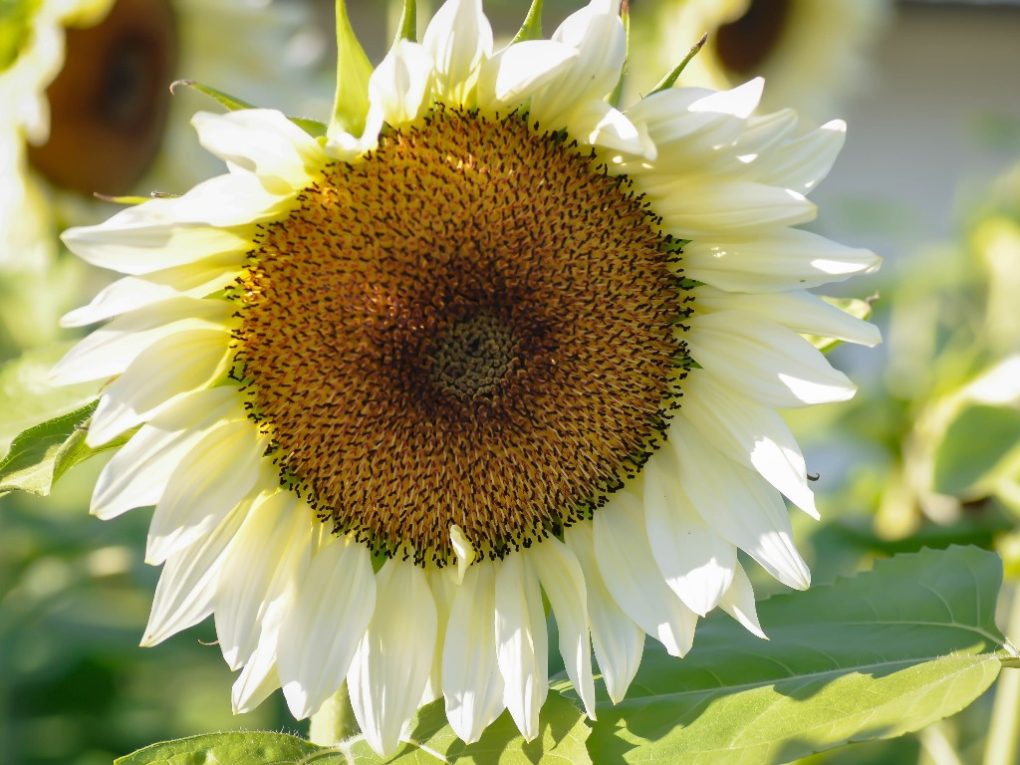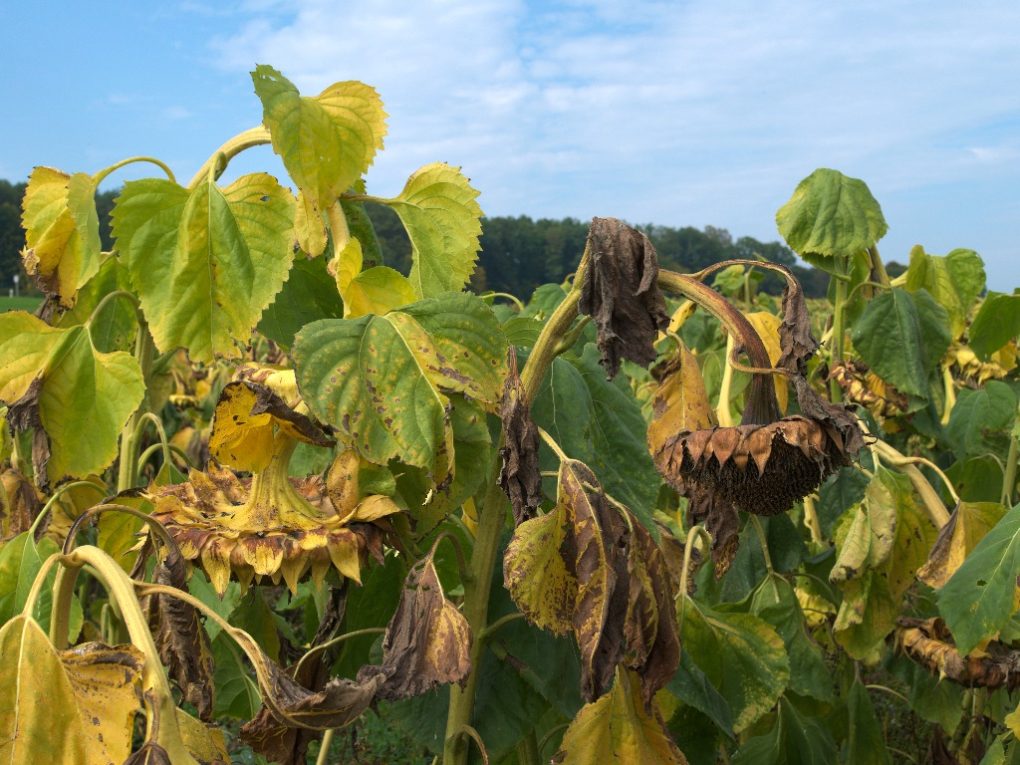Sunflower: History, Types, Uses of Sunflower and Its Pests and Diseases
Sunflowers are flowering plants in Asteraceae, native to North and South America. They are known for their large, bright yellow flowers that resemble the sun, which is how they got their name. Sunflowers are typically grown annually, although some species are perennial and can live for several years.

Sunflowers are valued for their ornamental beauty and economic importance as a source of food and oil. Sunflower plant seeds are high in protein and are commonly used in cooking, baking, and snacking. Sunflower oil, extracted from seeds, is a popular cooking oil used in various food products.
Sunflowers are easy to grow and are popular with gardeners of all skill levels. They prefer full sun and well-draining soil and can grow up to 10 feet tall, depending on the variety. Sunflowers come in various colors, including yellow, orange, red, and brown, and can be single or double-flowered.
If you’re wondering whether sunflowers are an herb or a shrub, the answer is clear: sunflowers are herbaceous plants. Unlike shrubs with woody stems that persist year after year, herbaceous plants like sunflowers have soft, green stems that die back to the ground each year. Depending on the species, this makes sunflowers well-suited to annual or perennial cultivation. So, sunflowers are a great choice if you’re looking for a colorful and easy-to-grow herbaceous plant!
Table of Contents
History of Sunflowers
Sunflowers have a rich and fascinating history dating back thousands of years. This section will explore the origin and cultivation of sunflowers.
Origin of Sunflowers
Evidence suggests that sunflowers were cultivated by American Indians in present-day Arizona and New Mexico about 3000 BC. Some archaeologists suggest that sunflower may have been domesticated before corn. Sunflowers were then taken to Europe by Spanish explorers around 1500 and became widespread throughout Western Europe for ornamental and medicinal purposes.
Cultivation of Sunflowers
Sunflowers were first cultivated for their valuable food source. With the European exploration of the New World, the flower’s popularity spread, as the rest of the world began to appreciate its beauty and sustenance. In the 18th century, sunflowers became popular in Russia too. Today, sunflowers are primarily grown for their oil-rich seeds, which are used for cooking oil, birdseed, and snacks.

The cultivation of sunflowers has also played a significant role in agriculture. Sunflowers are used as a rotation crop to break up soil diseases and pests, and they have a deep root system that can help break up compacted soil. They are also used in phytoremediation, a process that uses plants to remove contaminants from soil and water.
Types of Sunflowers
Sunflowers are a popular and well-loved plant that comes in many different varieties. Here are some of the most common types of sunflowers:
Common Varieties of Sunflowers
The most commonly cultivated sunflower species is Helianthus annuus, also known as the common sunflower. It is a tall plant that can grow up to 10 feet in height and produces large, yellow flowers that can reach up to 1 foot in diameter. Other common varieties of sunflowers include:
- Giant Russian sunflower
- Moulin Rouge sunflower
- Italian White sunflower
- Autumn Beauty sunflower
- Lemon Queen sunflower
Each of these varieties has its own unique characteristics, such as flower size, color, and growth habit.
Hybrid Sunflowers
Hybrid sunflowers are created by crossing two or more different varieties of sunflowers. This can result in plants with unique characteristics, such as:
- Variegated or multi-colored flowers
- Shorter or taller plants
- Increased disease resistance
- Improved seed production
Some popular hybrid sunflowers include:
| Name | Characteristics |
| Soraya | Orange-yellow petals with dark centers |
| Valentine | Red petals with dark centers |
| Italian White | White petals with dark centers |

Hybrid sunflowers are a great option for gardeners who want to try something new and unique in their garden.
Sunflower Pests
Sunflowers are generally easy to grow and maintain, but like any plant, they can be susceptible to pests and diseases. Here are some common problems you might encounter when growing sunflowers:
| Pest | Description |
| Contarinia Schulzi | Tiny midges that lay eggs in sunflower heads, causing low seed production and twisted, gnarled flower heads. |
| Cutworms | Caterpillars that feed on the stems of young sunflowers, causing them to wilt and die. |
| Aphids | Small, soft-bodied insects that feed on the sap of sunflowers, causing stunted growth and distorted leaves. |
Based on experience, it’s important to identify them early and take action before they can cause significant damage. This might include using insecticidal soap, introducing beneficial insects like ladybugs, or manually removing pests by hand.
Sunflower Diseases
Downy Mildew
Downy mildew is a fungal disease that can impact sunflowers, according to the Province of Manitoba, and many other plants. It is caused by the fungus Peronospora sparsa, and it thrives in cool, wet conditions. The disease can be identified by yellowish-green spots on the leaves and fuzzy, white growth on the underside of the leaves.
Downy mildew can be controlled using fungicides and cultural practices such as avoiding overhead watering, promoting good air circulation, and planting in well-draining soil. Removing and destroying infected plant material can also help prevent the disease’s spread.
To prevent the onset of downy mildew, it is important to keep sunflowers healthy through proper watering and fertilization and by planting them in well-draining soil and providing adequate air circulation. Early detection and prompt prevention are key to preventing the spread of the disease to other plants.
Rust
Rust is a fungal disease that can affect sunflowers and many other plants. It is caused by the fungus Puccinia helianthi, and it thrives in warm, humid conditions. The disease can be identified by orange, powdery spots on the leaves and stems.
Rust can be controlled using fungicides and cultural practices such as removing and destroying infected plant material, promoting good air circulation, and avoiding overhead watering. Crop rotation can also help to prevent the buildup of fungal spores in the soil.
To prevent the onset of rust, it is important to keep sunflowers healthy through proper watering and fertilization, planting them in well-draining soil, and providing adequate air circulation. Early detection and prompt treatment are key to preventing the spread of the disease to other plants.
Verticillium Wilt
Verticillium wilt is a fungal disease affecting sunflowers and many other plants. It is caused by the fungus Verticillium dahliae, and it can survive in the soil for many years. The disease can be identified by the wilting and yellowing of the leaves, followed by the death of the plant.

Unfortunately, there is no cure for Verticillium wilt once a plant is infected. Infected plants should be removed and destroyed to prevent the fungus from spreading to other plants. Crop rotation can also help to prevent the buildup of fungal spores in the soil.
To prevent the onset of Verticillium wilt, it is important to keep sunflowers healthy through proper watering and fertilization, as well as by planting them in well-draining soil and avoiding planting in areas where infected plants have previously grown. Early detection and prompt removal of infected plants are key to preventing the spread of the disease to other plants.
Sclerotinia Stem Rot
Sclerotinia stem rot is a fungal disease affecting sunflowers and many other plants. It is caused by the fungus Sclerotinia sclerotiorum and thrives in cool, wet conditions. The disease can be identified by the wilting and discoloration of the leaves, along with a soft rot of the stem near the soil line.
Sclerotinia stem rot can be controlled using fungicides and cultural practices such as removing and destroying infected plant material, promoting good air circulation, and avoiding overhead watering. Crop rotation can also help to prevent the buildup of fungal spores in the soil.
To prevent the onset of Sclerotinia stem rot, it is important to keep sunflowers healthy through proper watering and fertilization, planting them in well-draining soil, and providing adequate air circulation.
Phoma Black Stem
Phoma black stem is a fungal disease affecting sunflowers and many other plants. It is caused by the fungus Phoma macdonaldii, and it can survive in the soil for many years. The disease can be identified by the presence of blackened lesions on the stem, which can cause the stem to become weak and break.
Phoma black stem can be controlled using fungicides and cultural practices such as removing and destroying infected plant material, promoting good air circulation, and avoiding overhead watering. Crop rotation can also help to prevent the buildup of fungal spores in the soil.
To prevent the onset of Phoma black stem, it is important to keep sunflowers healthy through proper watering and fertilization, as well as by planting them in well-draining soil and avoiding planting in areas where infected plants have previously grown. Early detection and prompt removal of infected plants are key to preventing the spread of the disease to other plants.
